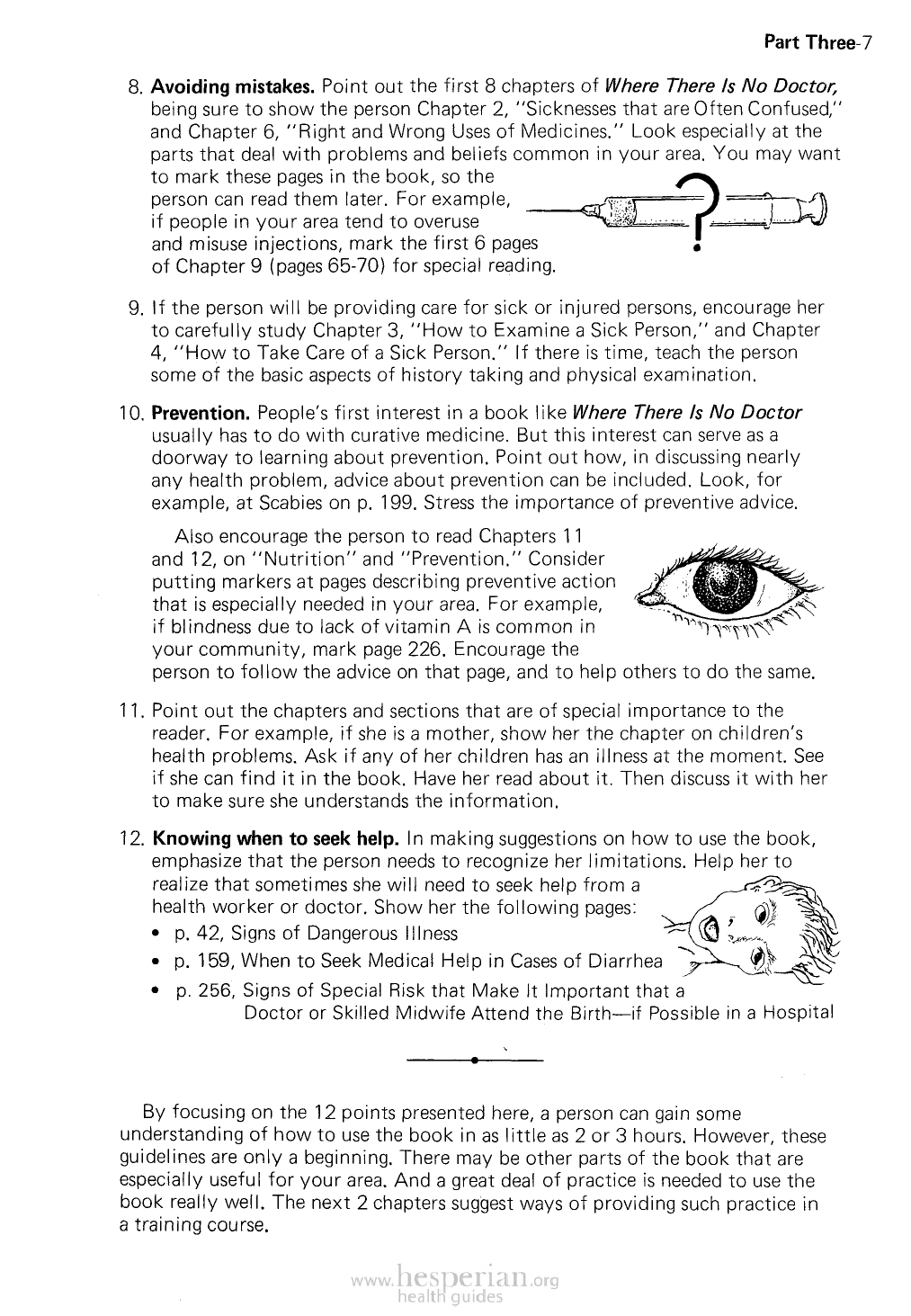
Part Thre2e0-vii
8. Avoiding mistakes. Point out the first 8 chapters of Where There Is No
Doctor, being sure to show the person Chapter 2, “Sicknesses that are Often
Confused,” and Chapter 6, “Right and Wrong Uses of Medicines.” Look
especially at the parts that deal with problems and beliefs common in your area.
You may want to mark these pages in tne
book, so the person can read them later.
For example, if people in your area tend to
overuse and misuse injections, mark the first 0
pages of Chapter 9 (pages 65-70) for special reading.
9. If the person will be providing care for sick or injured persons, encourage her
to carefully study Chapter 3, “How to Examine a Sick Person,” and Chapter 4,
“How to Take Care of a Sick Person.” If there is time, teach the person some of
the basic aspects of history taking and physical examination.
10. Prevention. People’s first interest in a book like Where There Is No Doctor
usually has to do with curative medicine. But this interest can serve as a
doorway to learning about prevention. Point out how, in discussing nearly any
health problem, advice about prevention can be included. Look, for example, at
Scabies on p. 199. Stress the importance of preventive
advice.
Also encourage the person to read Chapters 11
and 12, on “Nutrition” and “Prevention.” Consider
putting markers at pages describing preventive action
that is especially needed in your area. For example, if
blindness due to lack of vitamin A is common in your
community, mark page 226. Encourage the person to follow the advice on that
page, and to help others to do the same.
11. Point out the chapters and sections that are of special importance to the reader.
For example, if she is a mother, show her the chapter on children’s health
problems. Ask if any of her children has an illness at the moment. See if she
can find it in the book. Have her read about it. Then discuss it with her to make
sure she understands the information
12. Knowing when to seek help. In making suggestions on how to use the book,
emphasize that the person needs to recognize her
limitations. Help her to realize that sometimes she will
need to seek help from a health worker or doctor. Show her
the following pages:
• p. 42, Signs ot Dangerous Illness
• p. 159, When to Seek Medical Help in Cases of Diarrhea
• p. 256, Signs of Special Risk that Make It Important that a Doctor or Skilled
Midwife Attend the Birth—if Possible in a Hospital.
By focusing on the 12 points presented here, a person can gain some
understanding of how to use the book in as little as 2 or 3 hours. However, these
guidelines are only a beginning. There may be other parts of the book that are
especially useful for your area. And a great deal of practice is needed to use the
book really well. The next 2 chapters suggest ways of providing such practice in a
training course.